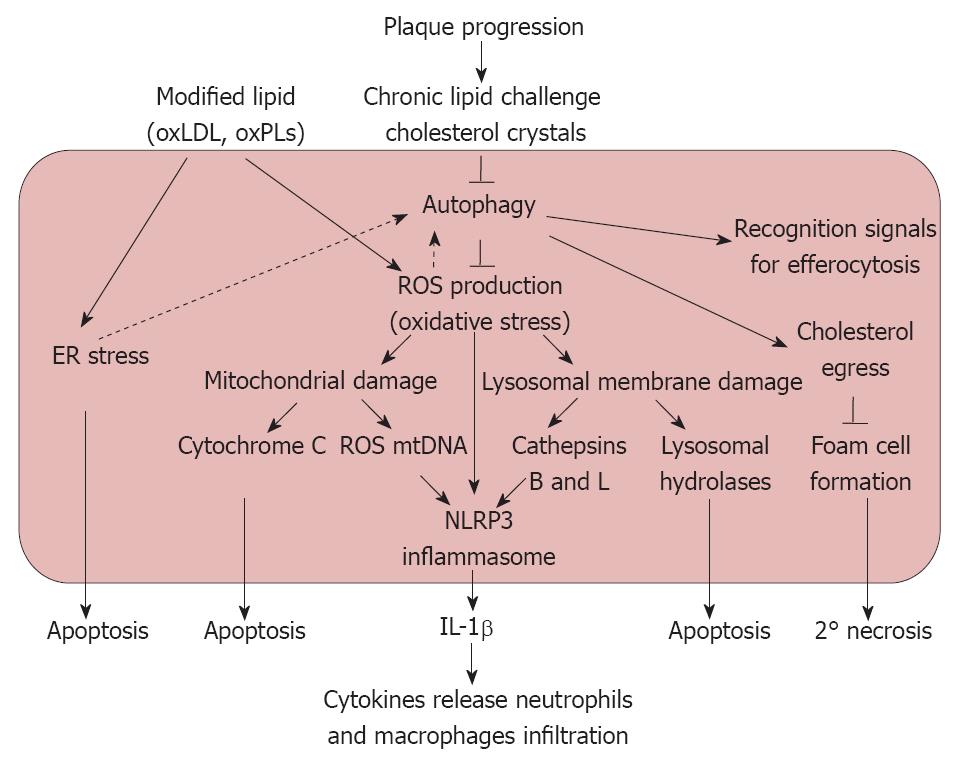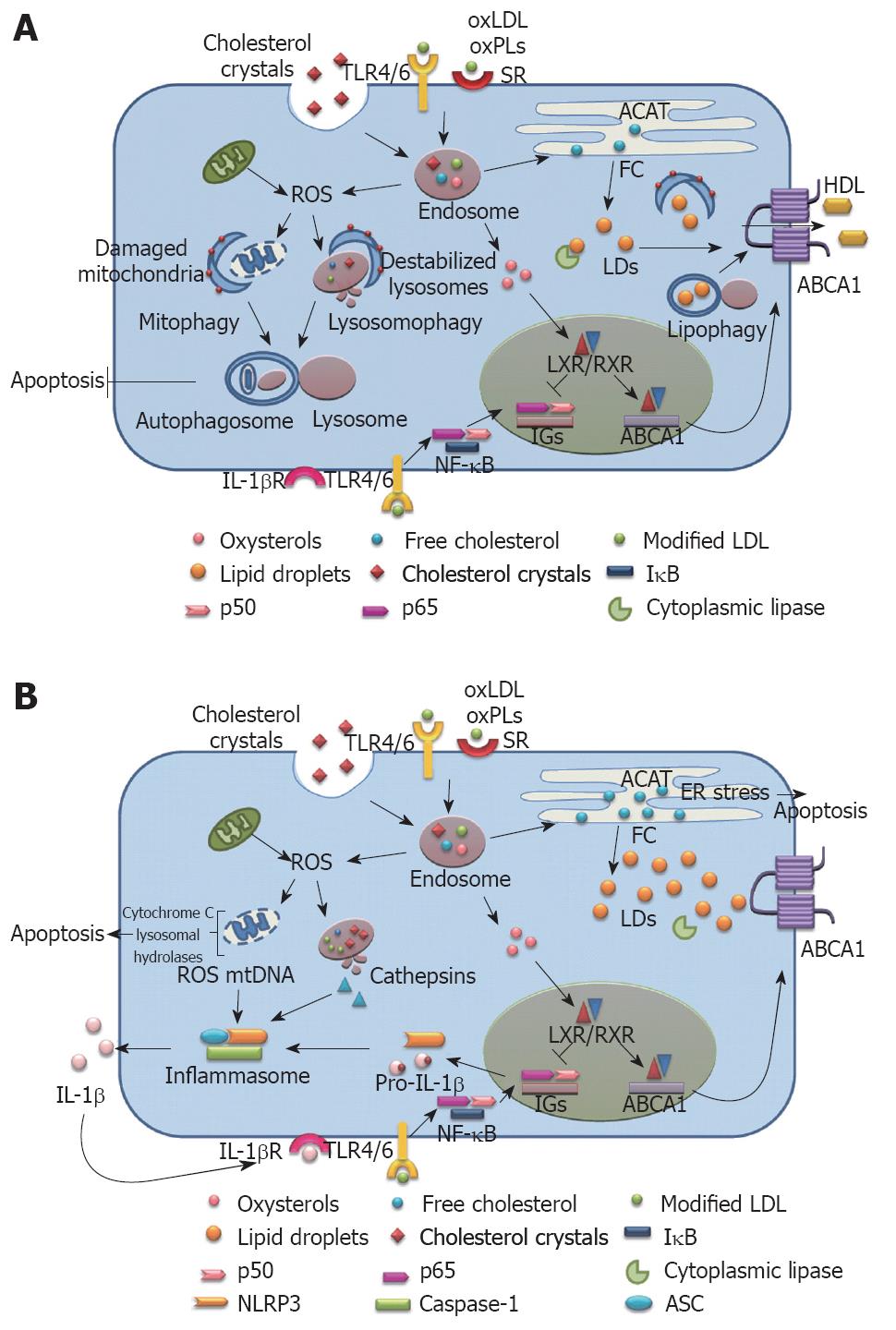Copyright
©2012 Baishideng Publishing Group Co.
World J Cardiol. Sep 26, 2012; 4(9): 271-274
Published online Sep 26, 2012. doi: 10.4330/wjc.v4.i9.271
Published online Sep 26, 2012. doi: 10.4330/wjc.v4.i9.271
Figure 1 Proposed pathways elucidating the possible role of autophagy in atherosclerosis.
ER: Endoplasmic reticulum; IL-1β: Interleukin-1β;oxLDL: Oxidized low density lipoprotein; oxPLs: Oxidized phospholipids; ROS: Reactive oxygen species; NLRP3: Nucleotide-binding domain leucine-rich repeat containing (NLR) family, pyrin domain containing 3.
Figure 2 Schematic depiction of the relationship between autophagy, cholesterol metabolism, inflammasome activation and atherogenesis in (A) early lesions when autophagy is functional, and (B) advanced lesion where autophagy is compromised.
ABCA1: ATP-binding cassette A1; ACAT: Acylcoenzyme A cholesterol acyltransferase; ASC: Apoptosis-associated speck-like protein; ER: Endoplasmic reticulum; FC: Free cholesterol; HDL: High density lipoprotein; IGs: Inflammatory genes; IL-1β: Interleukin-1β; IL-1βR: Interleukin-1β receptor; LD: Lipid droplets; LXR: Liver X receptor; NF-κB: Nuclear factor kappa B; NLRP3: Nucleotide-binding domain leucine-rich repeat containing (NLR) family, pyrin domain containing 3; oxLDL: Oxidized low density lipoprotein; oxPLs: Oxidized phospholipids; ROS: Reactive oxygen species; RXR: Retinoic X receptor; SR: Scavenger receptor; TLR: Toll-like receptor.
- Citation: Arora M, Kaul D. Coronary atherosclerosis: Significance of autophagic armour. World J Cardiol 2012; 4(9): 271-274
- URL: https://www.wjgnet.com/1949-8462/full/v4/i9/271.htm
- DOI: https://dx.doi.org/10.4330/wjc.v4.i9.271










